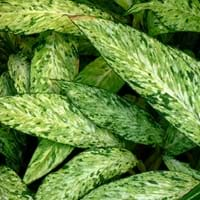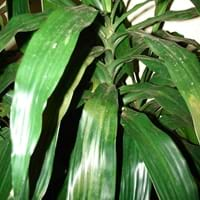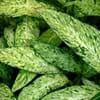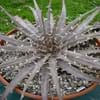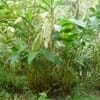Type
Tender Perennial
Tender Perennial
Types
Ornamental plant
Not Available
Habitat
Tropical regions
tropical environments, Well Drained
USDA Hardiness Zone
11-15
10-15
Sunset Zone
H1, H2, 24
H2, 21, 23, 24
Habit
Upright/Erect
Upright/Erect
Flower Color
Not Available
White
Flower Color Modifier
Bicolor
Bicolor
Fruit Color
Not Available
Orange
Leaf Color in Spring
White, Yellow, Green, Light Green, Light Yellow, Ivory
Dark Green
Leaf Color in Summer
White, Green, Light Green, Light Yellow, Ivory
Dark Green
Leaf Color in Fall
White, Yellow, Green, Light Green, Light Yellow, Ivory
Dark Green
Leaf Color in Winter
Light Green
Light Green
Leaf Shape
oblong or obovate
Linear
Plant Season
Spring, Summer, Fall, Winter
Spring, Summer, Fall, Winter
Sunlight
Partial shade, Full Shade
Full Sun, Partial Sun, Partial shade
Type of Soil
Loam, Sand
Loam, Sand
The pH of Soil
Acidic, Neutral
Acidic, Neutral
Soil Drainage
Well drained
Well drained
Bloom Time
Early Summer, Summer
Late Summer, Early Fall, Fall, Late Fall
Tolerances
Drought
Drought
Where to Plant?
Container
Container, Ground, Pot
How to Plant?
Divison, Seedlings
Rooted stem cutting, Stem Cutting
Plant Maintenance
Medium
Medium
Watering Requirements
Medium
Do Not over Water, Water Deeply, Water in morning to avoid prompting diseases, Water in the early morning hours
In Summer
Lots of watering
Lots of watering
In Spring
Moderate
Moderate
In Winter
Average Water
Average Water
Soil pH
Acidic, Neutral
Acidic, Neutral
Soil Type
Loam, Sand
Loam, Sand
Soil Drainage Capacity
Well drained
Well drained
Sun Exposure
Partial shade, Full Shade
Full Sun, Partial Sun, Partial shade
Pruning
Remove damaged leaves, Remove dead branches, Remove dead leaves
Cut or pinch the stems, Remove damaged leaves, Remove dead branches, Remove dead leaves, Remove deadheads
Fertilizers
All-Purpose Liquid Fertilizer
All-Purpose Liquid Fertilizer, Apply N-P-K, fertilize in growing season
Pests and Diseases
Red blotch
Insects, Leaf spot, Mealybugs, Mites, Red blotch, Root rot
Plant Tolerance
Drought
Drought, Humidity, Shade areas
Flowers
Insignificant
Insignificant
Flower Petal Number
Single
Single
Foliage Texture
Bold
Coarse
Foliage Sheen
Glossy
Glossy
Attracts
Hummingbirds
Mealybugs, Mites
Allergy
Eye irritation, Nausea, Swelling in mouth
Not Available
Aesthetic Uses
Showy Purposes
Beautification, Showy Purposes
Beauty Benefits
Not Available
Not Available
Environmental Uses
Air purification
Air purification
Medicinal Uses
Not Available
Not Available
Part of Plant Used
Leaves
Not Available
Other Uses
Air freshner, Showy Purposes
Not Available
Used As Indoor Plant
Yes
Yes
Used As Outdoor Plant
Yes
Yes
Garden Design
Container, Feature Plant, Foundation, Houseplant, Tropical
Container, Feature Plant, Foundation, Houseplant, Tropical
Botanical Name
DIEFFENBACHIA seguine
DRACAENA fragrans 'Janet Craig'
Common Name
Dumbcane
Corn Plant, Janet Craig Dracaena
In Hindi
dieffenbachia seguine
Janet Craig Dracaena
In German
Dieffenbachie
Janet Craig Dracaena
In French
dieffenbachia seguine
Janet Craig Dracaena
In Spanish
seguine DIEFFENBACHIA
Janet Craig Dracaena
In Greek
Dieffenbachia seguine
Janet Craig Dracaena
In Portuguese
Dieffenbachia seguine
Janet Craig Dracaena
In Polish
Difenbachia seguine
Janet Craig Dracena
In Latin
Caladium
Johann Peter Dracaena
Phylum
Tracheophyta
Tracheophyta
Class
Magnoliopsida
Magnoliopsida
Order
Alismatales
Asparagales
Genus
Dieffenbachia
Dracaena
Clade
Angiosperms, Monocots
Angiosperms, Monocots
Tribe
Abreae
Not Available
Subfamily
Aroideae
Not Available
Number of Species
Not Available
Difference Between Dumbcane and Janet Craig Dracaena
If you are confused whether Dumbcane or Janet Craig Dracaena are same, here are some features about those plants to help you choose better. Many people think that these two plants have the same characteristics, but one can see Dumbcane and Janet Craig Dracaena Information and learn more about it. Fertilizers required for proper growth of Dumbcane are All-Purpose Liquid Fertilizer, whereas for Janet Craig Dracaena fertilizers required are All-Purpose Liquid Fertilizer, Apply N-P-K and fertilize in growing season. Hence, one should know the basic difference between Dumbcane and Janet Craig Dracaena if you are planning to have them in your garden to enhance its beauty.
<
Flowering PlantsImportance of Dumbcane and Janet Craig Dracaena
Want to have the most appropriate plant for your garden? You might want to know the importance of Dumbcane and Janet Craig Dracaena. Basically, these two plants vary in many aspects. Compare Dumbcane and Janet Craig Dracaena as they differ in many characteristics such as their life, care, benefits, facts, etc. Every gardener must at least have the slightest clue about the plants he wants to plant in his garden. Compare their benefits, which differ in many ways like facts and uses. The medicinal use of Dumbcane is Not Available whereas of Janet Craig Dracaena is Not Available. Dumbcane has beauty benefits as follows: Not Available while Janet Craig Dracaena has beauty benefits as follows: Not Available.
Compare Facts of Dumbcane vs Janet Craig Dracaena
How to choose the best garden plant for your garden depending upon its facts? Here garden plant comparison will help you to solve this query. Compare the facts of Dumbcane vs Janet Craig Dracaena and know which one to choose. As garden plants have benefits and other uses, allergy is also a major drawback of plants for some people. Allergic reactions of Dumbcane are Eye irritation, Nausea and Swelling in mouth whereas of Janet Craig Dracaena have Not Available respectively. Having a fruit bearing plant in your garden can be a plus point of your garden. Dumbcane has showy fruits and Janet Craig Dracaena has no showy fruits. Also Dumbcane is not flowering and Janet Craig Dracaena is not flowering . You can compare Dumbcane and Janet Craig Dracaena facts and facts of other plants too.
